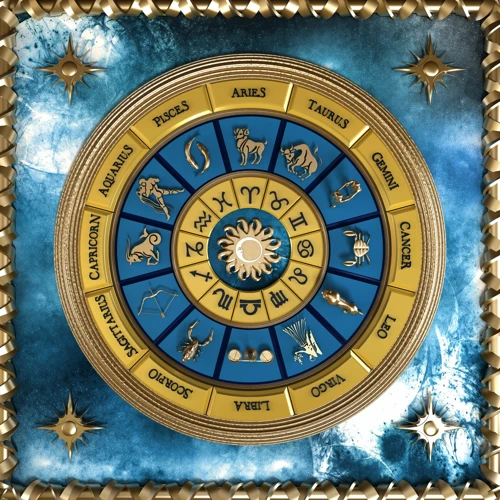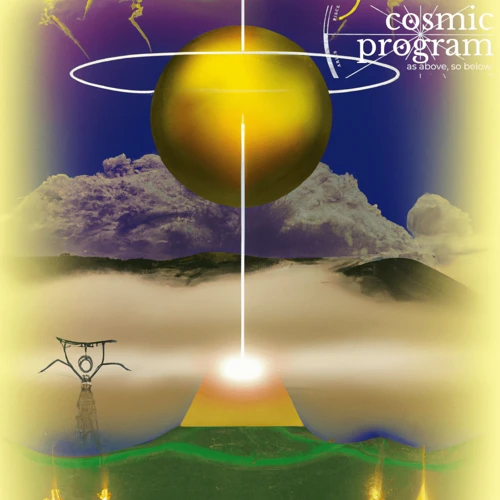From the vast expanse of the cosmos, the Sun reigns supreme, casting its radiant light upon the world. But its impact goes beyond mere illumination; the Sun holds a profound sway over our very identities and self-expression. In this article, we delve into the intriguing connection between the Sun and our sense of self. We explore the scientific basis for the Sun’s influence on human physiology, mental well-being, and even cultural beliefs. We also examine the Sun’s symbolic significance in art and literature, as well as its psychological impact on identity formation. We take a closer look at how the Sun inspires fashion trends and body art, allowing individuals to express their unique selves. Join us as we venture into the depths of the Sun’s impact on our identity, seeking to uncover the mysteries that lie within its brilliant rays.
Contents
- The Science Behind the Sun’s Influence
- The Sun’s Connection to Cultural Beliefs and Astrology
- The Sun’s Symbolic Significance in Art and Literature
- The Sun’s Psychological Impact on Identity Formation
- Expressing Self through Solar-inspired Fashion and Trends
- Conclusion
-
Frequently Asked Questions
- 1. How does solar radiation affect our skin?
- 2. Can the Sun’s rays affect our mental health?
- 3. Does the Sun play a role in regulating our sleep patterns?
- 4. Can the Sun’s rays improve our immune system?
- 5. What are the potential risks of excessive sun exposure?
- 6. Is there a link between sunlight and eye health?
- 7. How can sunlight impact our mood?
- 8. Can the Sun’s rays affect our hair?
- 9. Are there benefits of sunlight beyond vitamin D production?
- 10. Can the Sun’s rays affect our overall well-being?
- References
-
Frequently Asked Questions
- 1. How does solar radiation affect our skin?
- 2. Can the sun improve our mood?
- 3. What are solar deities and why were they worshipped?
- 4. How do astrologers determine Sun signs?
- 5. What is the symbolic significance of the Sun in art and literature?
- 6. How can sun exposure shape personal identity?
- 7. Does the Sun’s influence affect body image and beauty standards?
- 8. What are the current sun-themed fashion trends?
- 9. How are sun tattoos and body art related to self-expression?
- 10. Can the Sun’s impact on identity change over time?
- References
- Read More
The Science Behind the Sun’s Influence

The Science Behind the Sun’s Influence lies in its ability to emit solar radiation, which has profound effects on human physiology. Solar radiation consists of various wavelengths, including ultraviolet (UV) rays. When our skin is exposed to UV rays, it triggers the production of vitamin D, a vital nutrient for maintaining healthy bones and a robust immune system. Additionally, sunlight stimulates the release of serotonin, a neurotransmitter that uplifts mood and enhances mental well-being. The Sun’s influence on our physiology is not limited to these aspects alone; it also plays a role in regulating our circadian rhythms, which govern our sleep-wake cycles and overall hormonal balance. Research suggests that exposure to sunlight may have a positive impact on conditions like depression, seasonal affective disorder (SAD), and even certain skin conditions like psoriasis. The Sun’s vital role in nourishing our bodies and enhancing our well-being is a testament to its profound influence on our existence.
1. Solar Radiation and its Effects on Human Physiology
Solar radiation, particularly the ultraviolet (UV) rays emitted by the Sun, has a profound impact on human physiology. When our skin is exposed to UV rays, it triggers the production of vitamin D, a crucial nutrient for maintaining healthy bones and a robust immune system. UV radiation also plays a role in the synthesis of melanin, the pigment responsible for giving our skin its color. However, it’s important to note that excessive exposure to UV rays can lead to sunburns, premature aging, and an increased risk of skin cancer. To protect ourselves from harmful UV radiation, it is recommended to wear sunscreen, protective clothing, and seek shade during peak hours of sunlight. Additionally, sunglasses that block both UVA and UVB rays help safeguard our eyes from potential damage. While the Sun provides us with essential benefits, it’s vital to strike a balance in sun exposure to ensure the preservation of our health and well-being.
2. The Sun’s Role in Vitamin D Production and Mental Well-being
The Sun’s Role in Vitamin D Production and Mental Well-being is a fascinating aspect of its influence on our overall health. When our skin is exposed to sunlight, it triggers a series of reactions that lead to the synthesis of vitamin D in our bodies. Vitamin D is essential for calcium absorption, promoting strong bones and teeth, and supporting the immune system. It also plays a crucial role in regulating mood and mental well-being. Research has shown a significant link between vitamin D deficiency and conditions such as depression, anxiety, and seasonal affective disorder (SAD). The Sun’s rays provide a natural source of this vital nutrient, helping to uplift our mood and improve our overall mental health. However, it’s important to strike a balance in sun exposure, as overexposure to UV rays can have harmful effects on the skin. The key lies in finding the right amount of Sun exposure to reap the benefits of vitamin D synthesis while taking necessary precautions to protect our skin. Soaking in the Sun and maintaining optimal vitamin D levels can contribute to a brighter outlook on life and a healthier mind-body connection.
The Sun’s Connection to Cultural Beliefs and Astrology

The Sun’s Connection to Cultural Beliefs and Astrology spans across history and civilizations. In many ancient cultures, the Sun was revered as a deity, representing power, vitality, and fertility. Solar worship can be traced back to ancient civilizations like the Egyptians, who considered the Sun god Ra as the bringer of light and life. The concept of astrology also associates the Sun with individual personalities and characteristics. In astrology, the Sun represents the core essence of a person’s identity and is commonly referred to as the “Sun sign.” Each zodiac sign is believed to be influenced by the Sun’s energy in a unique way. For example, those born under the zodiac sign of Leo are often associated with the Sun’s qualities of leadership, creativity, and self-expression. Astrologers also analyze the position of the Sun in relation to other planets to gain insights into an individual’s personality and life path. The Sun’s connection to cultural beliefs and astrology demonstrates how its celestial presence has impacted human beliefs and our understanding of ourselves throughout history.
1. Solar Deities and Worship throughout History
Solar deities and worship throughout history have long captivated human cultures around the world. The Sun, with its powerful and life-giving rays, has been revered as a symbol of divinity and cosmic power. Ancient civilizations recognized the Sun’s significance and paid homage to solar deities in their religious practices. In Egyptian mythology, the sun god Ra was highly venerated and considered the ruler of gods. The Egyptians believed that Ra sailed across the sky during the day and journeyed through the underworld at night, symbolizing the cycle of life and death. Similarly, in Inca civilization, Inti, the sun god, held a prominent place in their religious beliefs. The Inca people believed that Inti provided warmth and sustenance to their crops, thus ensuring their survival. Solar worship was not limited to these civilizations alone; it permeated numerous cultures, including Sumerian, Aztec, and Norse mythology, among others. The reverence for solar deities showcases humanity’s deep-rooted fascination with the Sun’s power and its crucial role in sustaining life on Earth.
2. The Concept of Sun Signs in Astrology
The concept of Sun Signs in astrology is a fascinating aspect of celestial influence on human identity and self-expression. In astrology, the Sun represents the core essence of an individual’s personality and how they express themselves in the world. Sun Signs are determined by the position of the Sun at the time of a person’s birth and are categorized into twelve zodiac signs, each associated with specific traits and characteristics. For example, individuals born under the sign of Aries are often seen as bold, ambitious, and energetic, while those born under the sign of Libra are known for their balance, diplomacy, and artistic sensibilities. Sun Signs provide insight into key aspects of a person’s identity, such as their leadership style, communication preferences, and overall temperament. Many people turn to astrology to better understand themselves and their relationships, seeking guidance on compatibility, strengths, and potential challenges. While astrology may not have a scientific basis, its enduring popularity speaks to the human desire to find meaning and make sense of the complexities of identity and self-expression.
The Sun’s Symbolic Significance in Art and Literature

The Sun’s Symbolic Significance in Art and Literature is a testament to its universal appeal and timeless significance. In art, the imagery of the Sun often represents life, energy, and enlightenment. Across various cultures, the Sun is portrayed as a symbol of vitality and vitality. In ancient Egyptian mythology, the Sun god Ra was believed to be the source of all life and the bringer of light. Artists throughout history have sought to capture the Sun’s radiance and its transformative power through vibrant and illuminating artworks. Similarly, in literature, the Sun serves as a potent symbol, representing enlightenment, truth, and knowledge. It has been depicted as a guiding light, leading characters on their journeys of self-discovery and personal growth. The Sun’s symbolic presence in art and literature reflects our innate fascination with its radiant energy and its ability to inspire and illuminate. Its metaphorical representations allow us to explore deeper aspects of the human experience, encouraging introspection and a sense of wonder. Whether in a painting or a poem, the Sun’s symbolic significance captures both our imagination and our desire for meaning and enlightenment.
1. Sun Imagery as a Symbol of Life and Enlightenment
Sun imagery has been revered throughout history as a symbol of life and enlightenment. Cultures across the globe have incorporated the Sun into their mythologies, religious beliefs, and artistic expressions. In ancient Egypt, the Sun was associated with the god Ra, who represented creation and the sustainer of life. The Sun was depicted as a powerful deity, radiating light and energy to nourish the Earth. Its daily rising and setting represented the cycle of life, death, and rebirth. Similarly, in Hinduism, the Sun is personified as Surya, the god of light and wisdom. Surya is often depicted riding a chariot across the sky, symbolizing the journey of the Sun and its illuminating effects on the world.
The symbolic significance of the Sun extends beyond religious and mythological contexts. In literature, the Sun often serves as a metaphor for enlightenment and knowledge. It represents the source of truth and understanding, illuminating hidden truths and dispelling darkness. In works like Dante’s “Divine Comedy,” the Sun is portrayed as the ultimate source of divine light and the gateway to spiritual enlightenment.
Artistically, the Sun is depicted in various forms, from majestic paintings to intricate sculptures. It is often represented as a vibrant, radiant orb of light that evokes feelings of warmth, vitality, and hope. Sun imagery can be found in architectural designs, where its presence signifies the importance of life-giving energy and the pursuit of enlightenment.
Throughout history, the Sun’s symbolism as a beacon of life and enlightenment has captivated human imagination, inspiring awe, and reverence. Its celestial significance continues to influence art, literature, and cultural beliefs, reminding us of the enduring power and significance of this celestial body.
2. Expressing Identity through Sun-inspired Artistic Creations
Expressing Identity through Sun-inspired Artistic Creations allows individuals to showcase their unique personalities and connections to the Sun. One way people express themselves is through the creation of sun-inspired art. Artists may use vibrant colors reminiscent of a sunset or create intricate designs inspired by the shape and radiance of the sun. Paintings, sculptures, and digital artwork often incorporate sun motifs to convey a sense of warmth, energy, and enlightenment. Musical compositions can also be influenced by the Sun, with rhythms and melodies reflecting the intensity and power associated with its celestial presence. Literature and poetry make ample use of sun imagery to symbolize life, hope, and spiritual awakening. By drawing inspiration from the Sun, artists can communicate their personal journeys, emotions, and beliefs. The sheer diversity of artistic expressions inspired by the Sun is a testament to its universal appeal and the limitless possibilities it offers to individuals seeking to share their unique perspective with the world.
The Sun’s Psychological Impact on Identity Formation

The Sun’s Psychological Impact on Identity Formation is a fascinating area to explore. Sun exposure plays a crucial role in shaping our personal identities and how we perceive ourselves. Spending time in the warm glow of the Sun can evoke feelings of joy, vitality, and confidence. This positive energy can influence our self-perception and contribute to the development of a strong and authentic sense of self. On the other hand, societal beauty ideals often associate sun-kissed skin with attractiveness and health. This can lead individuals to strive for a certain skin tone and body image, sometimes even resorting to unsafe tanning practices. The Sun’s influence on our identity formation extends beyond physical appearance, as it can also impact our energy levels, motivation, and overall outlook on life. Embracing our individual connection with the Sun can help us forge a deeper understanding of who we are and how we fit into the world around us. By embracing the warmth of the Sun, we can radiate our true selves to those we encounter on our journeys through life.
1. The Role of Sun Exposure in Developing Personal Identity
Sun exposure plays a significant role in developing personal identity, both physically and emotionally. The warmth of the Sun’s rays on our skin can give us a sense of vitality and connection to the natural world. Spending time outdoors, basking in the sunlight, allows us to engage with our environment and explore our interests and passions. The Sun’s influence can also shape our physical appearance, as it affects our skin tone and can even leave behind sun-kissed freckles or a healthy glow. The experiences we have under the Sun, such as traveling to sunny destinations or participating in outdoor activities, contribute to the formation of our personal identities and shape our memories and sense of adventure. Sun exposure can also foster self-confidence, as it is often associated with an active and outdoorsy lifestyle. Embracing the Sun’s warmth and energy can empower individuals to express themselves authentically and develop a unique personal identity that aligns with their connection to nature. The Sun’s role in our lives is a testament to its profound ability to shape our sense of self.
2. The Sun’s Influence on Body Image and Beauty Ideals
The Sun’s Influence on Body Image and Beauty Ideals is an intriguing aspect of our relationship with this celestial entity. Exposure to the Sun’s rays often leads to a tanned complexion, which, in many cultures, has been associated with attractiveness and a healthy outdoor lifestyle. This societal preference for tanned skin has played a significant role in shaping beauty ideals, particularly in Western societies. However, it is important to note that beauty standards vary across cultures and historical periods. In some ancient civilizations, such as ancient Egypt, paler skin was considered a symbol of beauty and social status, as it demonstrated a life of luxury indoors away from the agricultural labor that caused tanning. The influence of the Sun on body image and beauty ideals extends beyond skin tone. The Sun’s warmth and light also contribute to our perception of beauty through the vitality it provides. Sunlight can give the skin a healthy glow and enhance features, promoting a sense of radiant beauty. At the same time, excessive exposure to UV rays can lead to skin damage, premature aging, and an increased risk of skin cancer. It is crucial to balance the desire for a sun-kissed appearance with adequate sun protection measures to prioritize long-term skin health. So, as we explore the Sun’s impact on beauty ideals, we must also actively promote safe sun practices and celebrate diverse definitions of beauty.
Expressing Self through Solar-inspired Fashion and Trends

Expressing self through solar-inspired fashion and trends allows individuals to embrace their connection to the Sun and exhibit their unique identities. Sun-themed fashion has gained popularity, with clothing and accessories featuring vibrant colors, celestial motifs, and sun-shaped patterns. These elements symbolize warmth, energy, and positivity, which resonate with those seeking to express themselves boldly. Flowy maxi dresses, adorned with sunburst patterns, evoke a sense of freedom and radiance. Sun-shaped earrings and necklaces become wearable reminders of the life-giving power of the Sun. Embroidered sun motifs on denim jackets or t-shirts add an artistic touch to everyday outfits. Sun-inspired trends extend to eyewear, with sunglasses featuring sleek designs that mimic the Sun’s rays. As fashion trends continue to evolve, individuals can tap into the Sun’s energy to evoke a powerful sense of self-expression through their clothing choices. Whether it’s embracing vibrant colors or donning accessories that reflect celestial beauty, solar-inspired fashion provides a way to manifest one’s identity with style and confidence.
1. Sun-themed Fashion and Accessory Trends
Sun-themed fashion and accessory trends have been captivating individuals who seek to express their connection to the Sun and channel its vibrant energy. One trend that has gained popularity is the incorporation of sun motifs in clothing and jewelry. Dresses and tops adorned with sun-shaped prints or embroideries add a touch of celestial charm to any outfit, while sun-shaped pendants and earrings serve as eye-catching statement pieces. Another fashion trend inspired by the Sun is the use of warm, vibrant colors reminiscent of the sunsets and sunrises. Saffron yellows, fiery oranges, and golden hues dominate fashion collections, invoking a sense of warmth and radiance. Accessories like sunglasses with golden frames or sun-shaped hair clips further elevate the sun-inspired look. The sun’s association with life and vitality has also influenced the choice of fabrics, with designers incorporating flowy, lightweight materials that mimic the sun’s rays and create a sense of movement. Sun-themed fashion allows individuals to embrace their inner luminosity and bask in the brilliance of the celestial body. It’s a way to showcase one’s connection to the Sun and celebrate its role as a symbol of energy and vitality.
2. Sun Tattoos and Body Art as Forms of Personal Expression
Sun Tattoos and Body Art serve as powerful means of personal expression, allowing individuals to showcase their connection to the Sun and symbolize its significance in their lives. Sun tattoos, with their vibrant and dynamic designs, often represent life, vitality, and energy. They can range from simple and minimalist depictions to intricate and elaborate designs that incorporate other elements such as celestial bodies or tribal motifs. Sun tattoos are popular choices for both men and women, transcending cultural boundaries and resonating with people from various backgrounds. They can be placed on different parts of the body, including the shoulder, back, arm, or ankle, providing ample opportunity for self-expression. For some, a sun tattoo may signify their affinity towards warmth, light, and positivity. Others may choose a sun tattoo as a way to honor cultural and spiritual beliefs related to the sun. It can also represent the idea of personal growth, transformation, and embracing one’s inner light. Body art, including temporary sun-inspired tattoos or henna designs, opens up even more possibilities for temporary self-expression. With their ephemeral nature, these forms of body art allow individuals to experiment with different sun-inspired designs without the commitment of a permanent tattoo. Whether as a permanent mark or a temporary adornment, sun tattoos and body art enable individuals to express their unique connection to the Sun and their personal journey of self-discovery. Through these artistic expressions, one can externalize their inner light and radiate the essence of the Sun in their own way.
Conclusion

In conclusion, the Sun’s impact on our identity and self-expression is a fascinating phenomenon that spans across various realms. From a scientific perspective, we have explored how solar radiation affects our physiology, promotes the production of vital vitamin D, and contributes to mental well-being. Culturally, the Sun has been revered as a deity and has played a significant role in religious and astrological beliefs throughout history. In art and literature, the Sun symbolizes life, enlightenment, and serves as a powerful source of inspiration for artistic creations. The Sun’s psychological influence on identity formation and body image cannot be disregarded, as it shapes our perception of self and beauty ideals. Additionally, individuals express themselves through sun-inspired fashion trends and body art, showcasing their unique identities. The Sun truly holds a multifaceted significance in our lives, and understanding its role allows us to appreciate the profound impact it has on our sense of self. Explore the wonders of the cosmos and delve deeper into the mysteries of the Sun’s influence on human existence.
Frequently Asked Questions

1. How does solar radiation affect our skin?
Solar radiation, particularly ultraviolet (UV) rays, can have both beneficial and harmful effects on our skin. Controlled exposure to sunlight can stimulate the production of vitamin D, but excessive exposure without proper protection can lead to sunburn, premature aging, and an increased risk of skin cancer.
2. Can the Sun’s rays affect our mental health?
Absolutely! Sunlight plays a significant role in boosting mental health. It stimulates the release of serotonin, a neurotransmitter that contributes to feelings of happiness and well-being. Sunlight exposure can help alleviate symptoms of depression and seasonal affective disorder (SAD).
3. Does the Sun play a role in regulating our sleep patterns?
Yes, the Sun plays a crucial role in regulating our sleep patterns. The exposure to natural sunlight during the day helps synchronize our circadian rhythms, which govern our sleep-wake cycles. Getting enough sunlight during the day and avoiding bright light in the evening can help promote a healthy sleep routine.
4. Can the Sun’s rays improve our immune system?
Yes, sunlight exposure can have a positive impact on our immune system. When our skin is exposed to UV rays, it triggers the production of vitamin D, which is essential for maintaining a strong immune system and facilitating calcium absorption for healthy bones.
5. What are the potential risks of excessive sun exposure?
Excessive sun exposure can lead to various risks, including sunburn, premature aging of the skin, wrinkles, and an increased risk of skin cancer, such as melanoma. It’s important to practice sun safety measures like wearing sunscreen, protective clothing, and seeking shade during peak sun hours.
6. Is there a link between sunlight and eye health?
Yes, prolonged exposure to sunlight, especially UV rays, can contribute to eye damage and vision problems such as cataracts and age-related macular degeneration (AMD). It’s crucial to wear sunglasses that block UV rays and protect the eyes from harmful sunlight.
7. How can sunlight impact our mood?
Sunlight has a positive impact on our mood due to its ability to increase the release of serotonin in the brain. Serotonin is a neurotransmitter associated with feelings of happiness and well-being, helping to combat symptoms of depression and improve overall mood.
8. Can the Sun’s rays affect our hair?
Excessive sun exposure can lead to hair damage, such as dryness, brittleness, and discoloration. UV rays can also break down the proteins in the hair, leading to weakened strands. It’s essential to protect your hair from the Sun by wearing hats or using hair products with UV protection.
9. Are there benefits of sunlight beyond vitamin D production?
Absolutely! While vitamin D production is a crucial benefit of sunlight, it is not the only one. Sunlight exposure can improve our mood, enhance cognitive function, boost energy levels, and even promote the healing of certain skin conditions like psoriasis.
10. Can the Sun’s rays affect our overall well-being?
Yes, the Sun’s rays can have a significant impact on our overall well-being. From improving our mood and mental health to supporting our immune system and regulating our sleep patterns, sunlight plays a crucial role in our overall health and vitality.
References
Frequently Asked Questions

1. How does solar radiation affect our skin?
Solar radiation, particularly ultraviolet (UV) rays, can penetrate the skin and damage cells, leading to sunburn, premature aging, and an increased risk of skin cancer.
2. Can the sun improve our mood?
Absolutely! Sunlight triggers the release of serotonin, a neurotransmitter that helps regulate mood. Sun exposure can improve mental well-being and alleviate symptoms of depression and seasonal affective disorder (SAD).
3. What are solar deities and why were they worshipped?
Solar deities are gods and goddesses associated with the Sun. They were often worshipped because the Sun was considered a powerful and life-giving force, essential for survival and agriculture.
4. How do astrologers determine Sun signs?
Astrologers determine Sun signs based on an individual’s date of birth. The position of the Sun at the time of birth determines which zodiac sign it falls under.
5. What is the symbolic significance of the Sun in art and literature?
The Sun is often depicted as a symbol of life, enlightenment, and divine power in art and literature. It represents warmth, vitality, and the pursuit of knowledge and truth.
6. How can sun exposure shape personal identity?
Sun exposure can shape personal identity by influencing our appearance and individual characteristics such as skin tone, hair color, and freckles. These physical attributes contribute to how we perceive ourselves and how others perceive us.
7. Does the Sun’s influence affect body image and beauty standards?
Yes, the Sun’s influence can shape body image and beauty ideals. Many equate a tan or sun-kissed complexion with attractiveness, while the pursuit of fair or pale skin is valued in some cultures as a sign of social status.
8. What are the current sun-themed fashion trends?
Current sun-themed fashion trends include clothing and accessories featuring sun motifs, such as sunflower prints, graphic representations of the Sun, and jewelry inspired by celestial bodies.
Sun tattoos and body art featuring sun symbols allow individuals to express their connection to the Sun and its qualities. They can represent warmth, energy, vitality, and a desire to embrace the light within.
10. Can the Sun’s impact on identity change over time?
Yes, the Sun’s impact on identity can change over time as societal beliefs and beauty standards evolve. Personal experiences, cultural influences, and individual growth also play a role in shaping the way the Sun’s influence is interpreted and expressed.
References
- Understanding children’s funds of identity as learners …
- Literary C haracter Analysis: Beneatha from Raisin in the Sun
- From Identity to Enaction: Identity Behavior Theory







